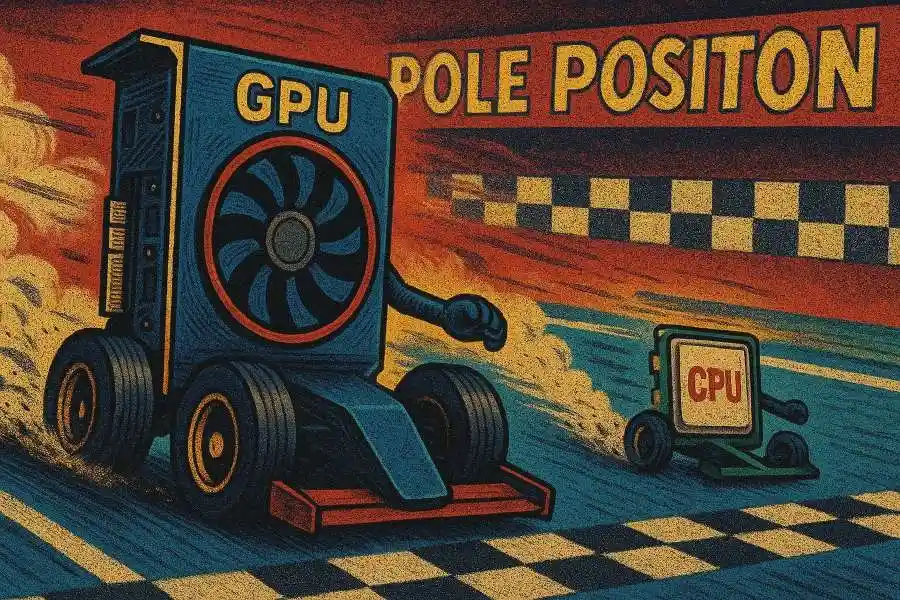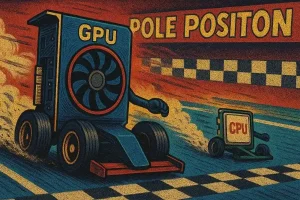Chasing frames, not cores: GPU grunt over CPU flexing
Back in the day, if your CPU wasn’t doing overtime, your game stuttered like a 90s dial-up modem. eSports titles were lean but still demanded serious single-core speed to keep frame times low and hit those magical triple-digit frame rates. But things have changed, not just in how games are made, but in how engines are optimised.
Today’s big eSports hitters (Valorant, CS2, League of Legends, Fortnite, Overwatch 2) are all built to run fast, first and foremost. That means devs are designing around accessibility, not hardware exclusivity. These aren’t 4K cinematic adventures. These are twitchy, high-refresh games made to run on a potato if needed. And when the devs optimise that hard, the CPU becomes less of a bottleneck.
Why the GPU’s carrying the weight now
Modern eSports engines lean heavily on GPU acceleration. Everything from physics, shadows, particle effects and post-processing now offloads to your graphics card. The CPU still has work to do. AI, game logic, draw calls… but the bottleneck has moved.
Unless you’re pushing 240+ fps on a 360Hz monitor, your Ryzen 5 or Core i5 isn’t breaking a sweat. Even CS2, which is notorious for CPU load, runs butter-smooth on mid-tier silicon when paired with a solid GPU.
Multi-core scaling isn’t magic yet
Another factor? Game engines still don’t fully utilise all those cores and threads. Yes, modern titles are getting better at splitting tasks across more cores, but eSports devs don’t want complexity. They want stability. That’s why games like Valorant and LoL still favour strong single-core performance over 12-thread monsters. More threads don’t mean more frames, not unless the game knows how to use them.
Real-world example: Valorant vs AAA bloat
Compare Valorant to something like Cyberpunk 2077. One runs on a toaster, the other melts high-end rigs. Why? Valorant is built for competitive precision. Its rendering pipeline is light, its assets are lean, and Riot makes sure your mouse click translates to a headshot without a single missed beat.
You can run Valorant on a laptop with integrated graphics and still frag out. Try that with Cyberpunk and you’ll be staring at a slideshow.
What this means for your next build
If you’re building for eSports, don’t blow your budget on an overpriced CPU. A good 6-core chip with high clock speed is more than enough. Invest in:
- A high refresh monitor (144Hz or better)
- A quality GPU that can keep up with your panel
- Fast RAM (at least 16GB, 3200MHz or faster)
- An SSD to keep loading times snappy
At Punk PC, we build with purpose. You tell us what you play, and we’ll match your hardware to your style. No fluff, no flex, just pure performance. Whether you’re aiming for 240fps in CS2 or just want a silent build that doesn’t throttle mid-match, we’ve got you.
Final take
CPU still matters, but for most eSports titles? It’s not the power-hungry beast it once was. Smart devs are building smarter games, games that reward frame rates, not wattage. And that means your money’s better spent where it counts: GPU, display, cooling, and a system built for wins.
Need a build tuned for eSports dominance? Hit us up. We’ll make sure your rig is lean, mean, and frame-accurate.
TL;DR
- eSports games like Valorant and CS2 are designed to run smooth on modest CPUs
- The GPU does the heavy lifting now, especially with modern rendering engines
- Multi-core CPUs sound sexy but don’t always translate to better eSports performance
- Prioritise high-refresh monitors, fast RAM, and strong GPUs over maxing out on CPU power
- Punk PC builds rigs that don’t waste your budget. They win matches.
Get in touch if you need help or check out our builds.






